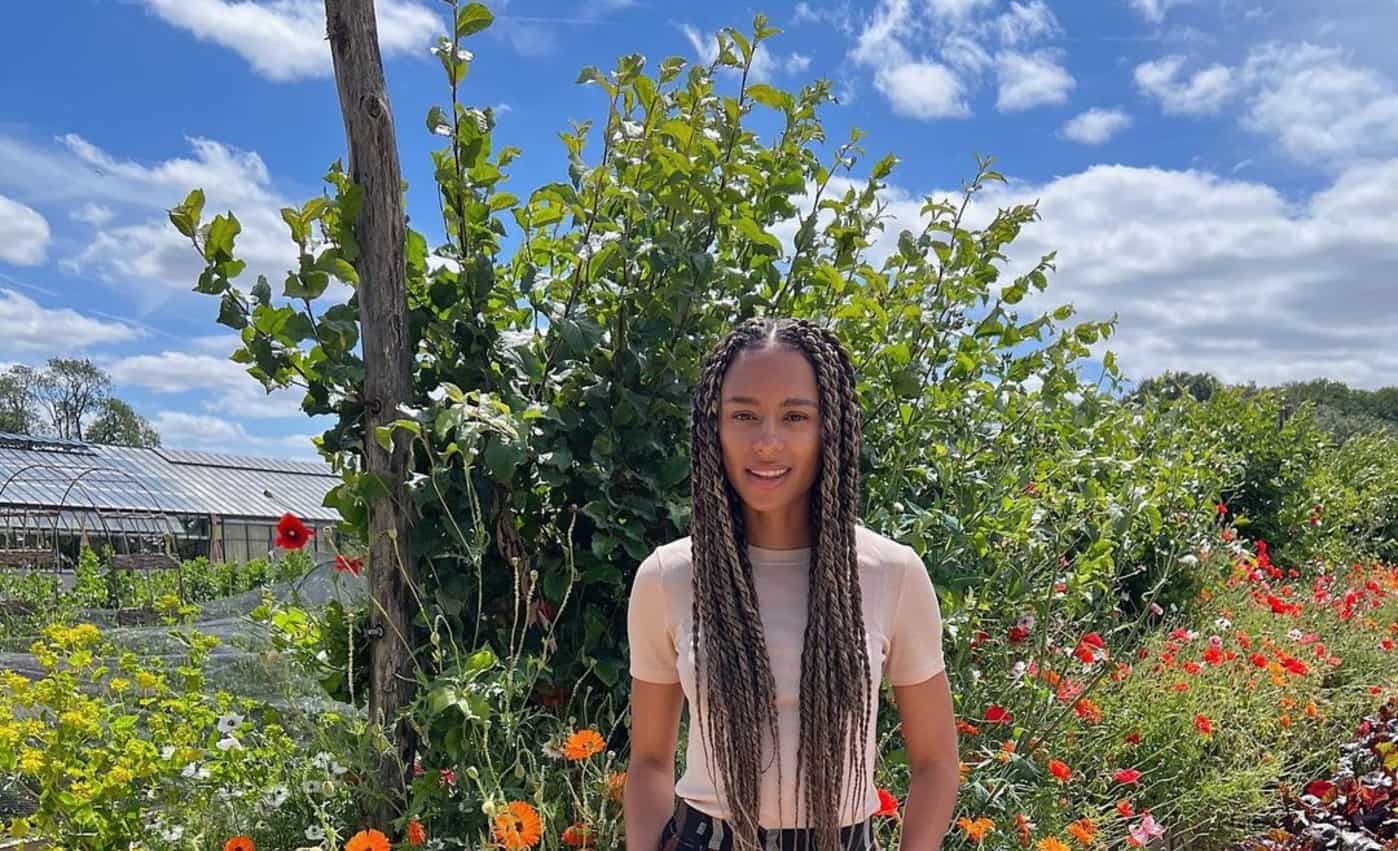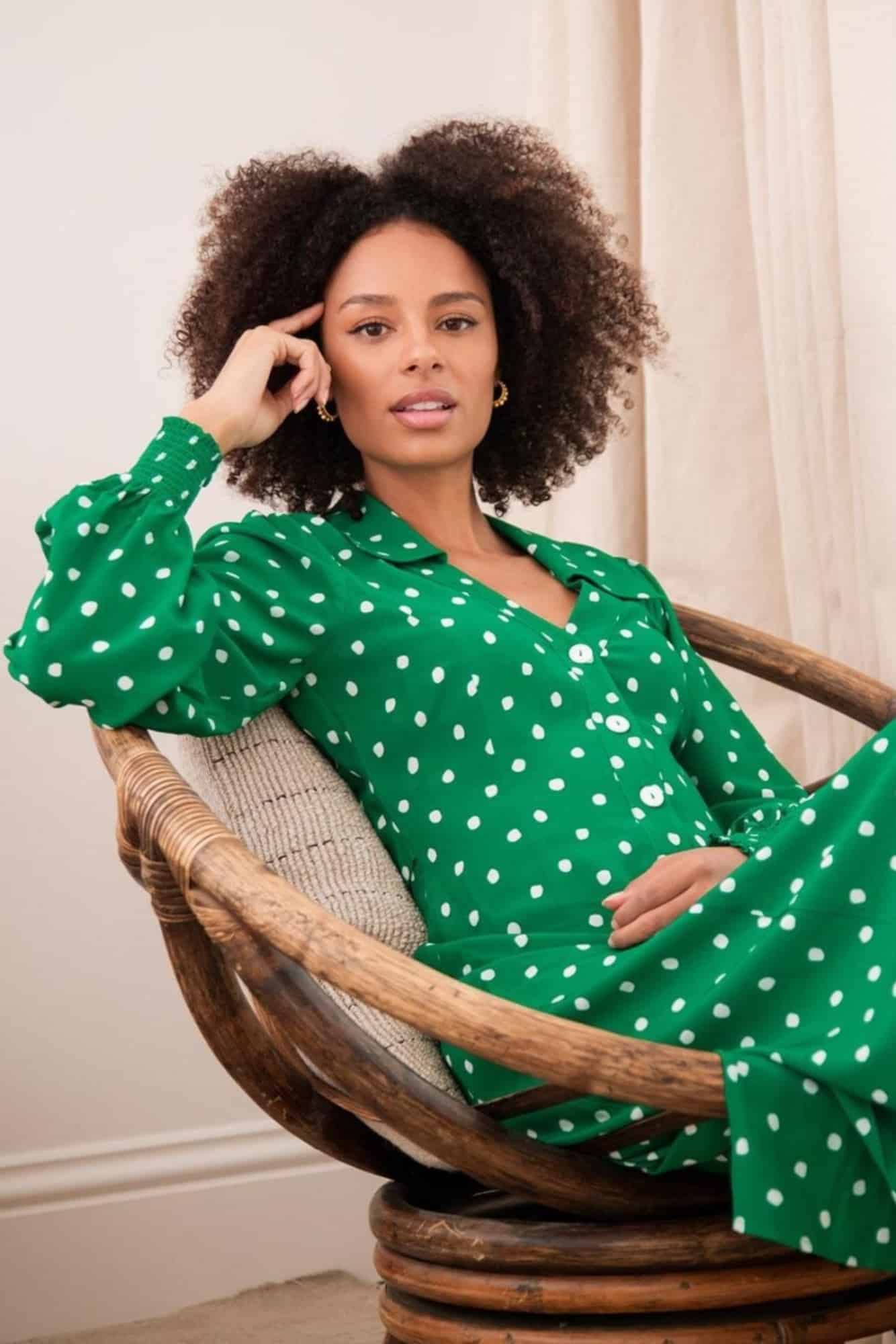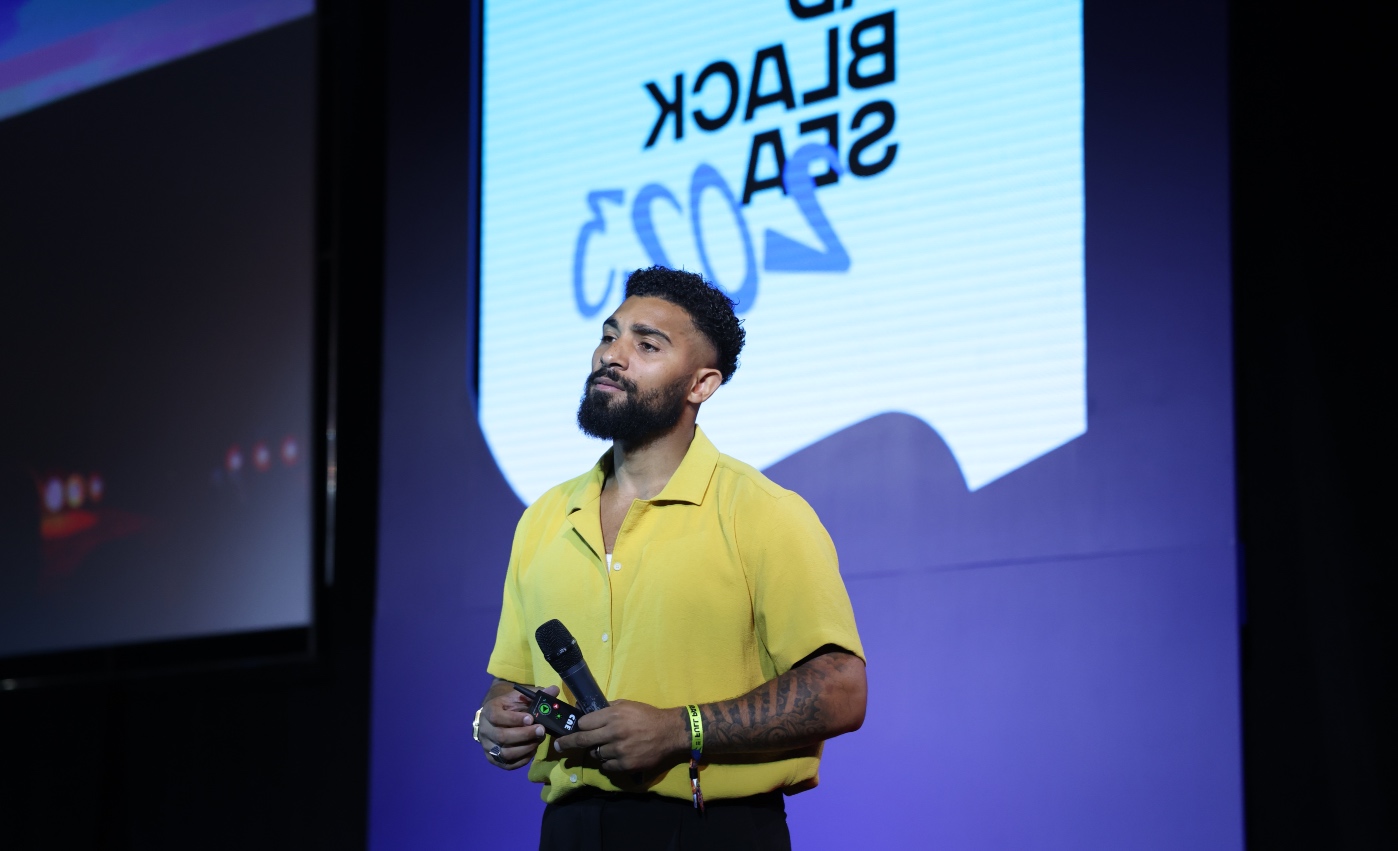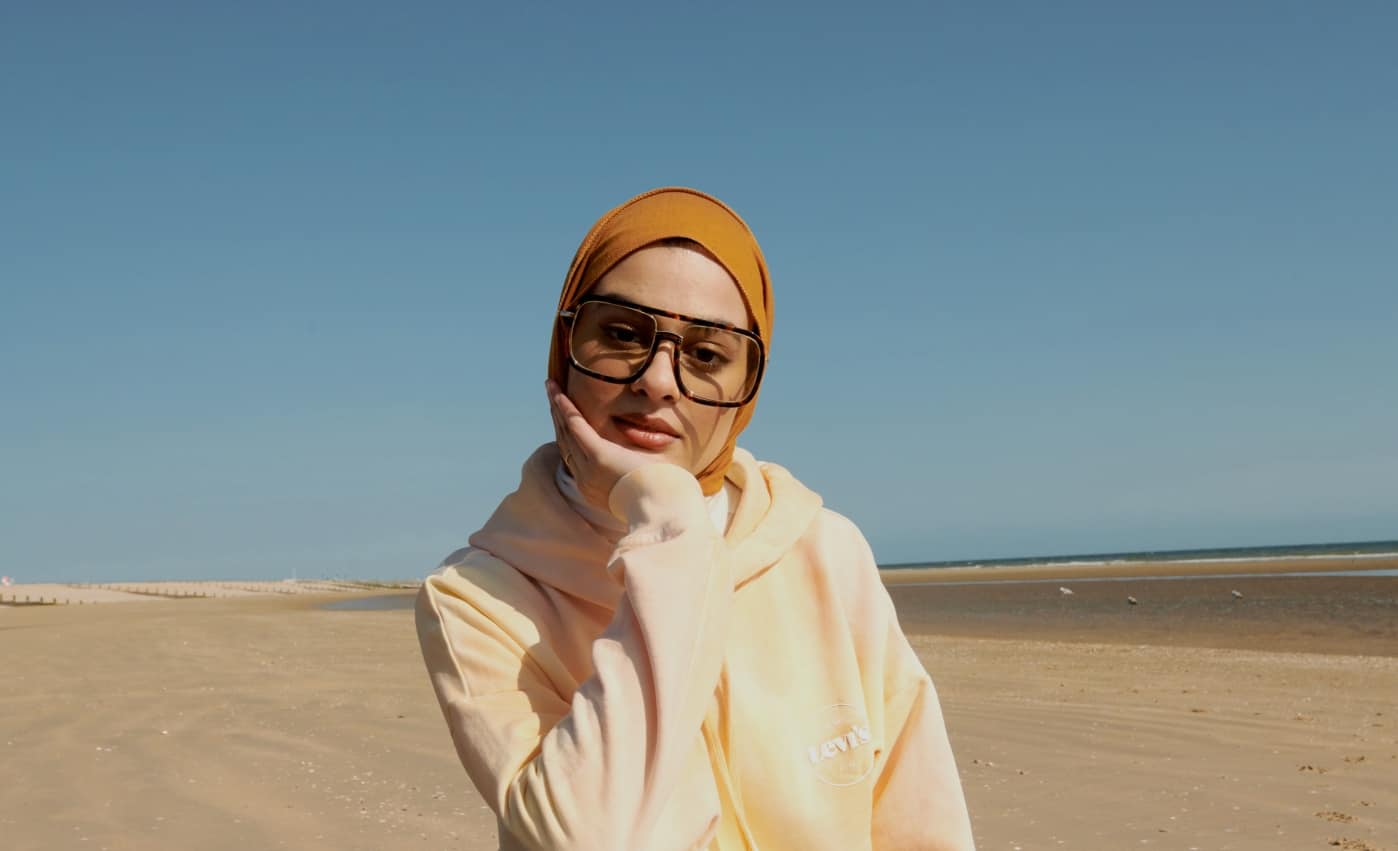I first met Charlotte Stavrou six years ago when she was a freelancer, running the socials for a brand we were both working with. I remember thinking at the time that she was not only chic in an enviably insouciant way, but she was also exceptionally kind, with a sort of authoritative gentleness that is rare. Roll on to 2024 and, now an award-winning business owner, a Black female founder, post-pandemic, post-seismic shifts in the global political landscape, Stavrou’s generosity of spirit is undimmed.
Key takeaways
- On brands: 2023 was a challenge because “brands went back to their old ways”
- On marketing: It’s back to basics for 2024 – “We need to be looking at who is actually creating the conversation”
- On influencers: “Creators need to go back and think ‘why am I doing this?’”
- On audiences: “I think people are getting tired of short content”
Take as an example the fact that I ignorantly ask her what the name of her talent management and consultancy SevenSix Agency represents. Without a flicker of impatience, she tells me: “It’s a nod to the 1976 Race Relations Act, a really big moment in UK legislation.” The 1976 Act was the first iteration of what eventually became the 2010 Equality Act, which means “you can’t discriminate against people for any reason”. Stavrou continues: “When I was coming up with the concept of the agency, I knew it was always going to be about diversity and inclusion, and I was always going to be focused on minority groups and underrepresented voices.” The name, therefore, is a reminder for everyone who works with Stavrou and her team that this mission is “perfectly embedded in the DNA”. She adds: “I think that’s our secret sauce.”
Secret sauce indeed, as Stavrou is carving an impressive path through an industry that has grown up at the same time she has. Stavrou was only 16 or 17 when she began building her community on MySpace. The creator economy didn’t yet exist but Stavrou understood from her early teens that establishing these communities was a core part of marketing. It helped, she says, that: “I was obsessed with social media. I love how storytelling can change perceptions and can get people to do things.”
Stavrou found university tough; she was a little lonely and felt she wasn’t always surrounded by people she had much in common with. She says: “I don’t think my likes and interests were being nurtured in the way I needed because I didn’t have my people.” Instead, she found them on the internet. 2010 was a golden period for blogging and the early days of YouTube; Stavrou namechecks Sammi Maria (then BeautyCrush), Grace Victory (then Ugly Face of Beauty), Patricia Bright (then BritPopPrincess), and Zoe Sugg (then Zoella), all now household names. But, says Stavrou, at the time “all of those girls were my age. We were all, if not the same year at school, then a year apart. Everyone was posting on the internet looking for their communities and I was just lapping it up.” She credits Shirley B. Eniang for tipping her online space into an IRL one. “We both went to university in the same town. She had a YouTube, I had a YouTube and she was like, ‘Hey, if you want to meet…’”
When it came to the workplace, Stavrou already had a blog, a YouTube channel and experience of working with creators, so she naturally gravitated towards a career in social media. Everywhere she started, she asked if she could try different things: “‘Can I build you a blog? Can I build your community?’ and everyone just kept saying ‘yes’.” Eventually, she found herself with two game-changing accounts that enabled her to properly articulate her ambitions: “I went into two really great businesses that allowed me to do a lot in community.” One was Sanrio, and the Hello Kitty brand, where she leant heavily on influencers, community and stretching a budget, and the other was the cult salon WAH Nails, which was fuelled by events, marketing and community. When the focus at WAH Nails shifted, Stavrou decided to move on. She pitched a freelance proposition to the founder Sharmadean Reid, and said to herself: “I’m just going to go freelance for a couple of months.” The power of that period at WAH Nails, says Stavrou, is that it showed her what was possible: “The salon was a hub for female founders, specifically, a hub of creativity. I learned so much from them, and I didn’t actually realise until WAH that being an entrepreneur was a possibility.” And then, she adds: “All of a sudden, I’m starting an agency. It just happened. And to this day, I’m constantly like, ‘why am I doing this?’”
SevenSix Agency does a bit of everything. “I have a very busy brain and I have so much insight into the influencer world that we tend to just do everything.” They manage talent, a small roster, including Archie Versarchie and Leal Alexander, “but we want to keep it boutique”. The roster is predominately people of colour or people from the LGBTQIA+ community or “just communities we don’t see being pushed to the forefront”. The other part of the business is The Creator Club, “which is my baby and it’s something we’re growing heavily this year”. Essentially, The Creator Club is a membership-established database of creators. The Creator Club gives brands the ability to tap into nano and micro influencers for campaign casting, user-generated content (UGC) or market research. For creators, it is invitations to events, collaboration and education packages (some free, some paid for). The agency is also a TikTok Shop partner so it has monthly training events on the platform. Side note: Stavrou says there’s renewed focus on affiliate marketing “because it’s an excellent way for creators to make an income outside of brand partnerships”.
You may also like
The beauty of The Creator Club for Stavrou is the “deep-rooted access that I think a lot of agencies don’t have, mainly because they’re not started by influencers and they’re not in the community already”. A recent deep dive into the data revealed there are 55 languages spoken in The Creator Club, the sort of information advantage Stavrou relishes. In fact, Stavrou is a bit of a data geek, which leads us to the agency’s Influencer Pricing Report, which provides creator fee guidelines for TikTok, Instagram and YouTube, as well as advice on partnership contractual obligations. Launched in 2021, the report sent shockwaves through the industry when it exposed the worrying racial pay gap (see CORQ’s report on the 2023 edition here). Stavrou originally generated the study because the agency managed two creators who were almost identical in terms of insights but looked completely different, and she says: “We were getting a lot of work for one and not a lot of work for the other.” She adds that some of the conversations around the latter creator “were really icky”. Stavrou found herself in the position of wanting to call a brand out for what it was, racism, but without “calling them out in a way that we couldn’t come back from, because we’re working with them with other of our talent”. She adds: “It’s really difficult as an agency when you are responsible for lots of people to go all guns blazing on a brand. I needed something that could still make me look nice and sound professional in their eyes. But also slap it down and say, ‘give this a read. You’re going to realise you’re being, even if it’s subconscious, racist’.”
When I ask her if it has become easier to have the conversation since then, she replies carefully: “I think it has become easier. I don’t think it’s got better but I think people understand it more.” The murder of George Floyd, she says, catapulted those conversations to the forefront. “I think people have a very different understanding of what discrimination looks like.” Having resources such as the pricing report really help, she adds.
However, the past year has been a challenge. In 2023, Stavrou feels, “people just went back to their old ways”. She says: “Brands say ‘we want to do this’ but they’re not actually following through.” CORQ’s own data analysis (here) also shows that while creators of colour are generating the most consistently engaging content, they are not generating the most paid work: “50% of the top ten most engaging creator adverts were produced by POC creators. Overall, 27.4% of the top 50 were made by POC creators yet this group only made up 8% of the creators who won the most brand work.” Stavrou’s hoping this year’s pricing report, due this month, will respark the conversation.
Because, in essence, this business is all about conversation, and this is why Stavrou is anticipating a return to the basics in influencer marketing. “We need to be looking at who is actually creating the conversation, and it might not be on Instagram. It might be on Reddit, it might be in the YouTube comments, it might be in a Substack.” She says: “In the humble beginnings, where there was no money exchanged, it was just people testing, writing reviews and getting excited. Now we have an exchange of money and I very much advocate for that. But it’s going back to why people want to post rather than just making an income.”
Authenticity is an embarrassingly overused buzzword so for Stavrou we should be heading into a purpose era. “I’m seeing a lot of creators who are exhausted and they’re posting because they have to, not because they want to. They need to go back and think ‘why am I doing this?’” As a result, she is seeing the return of blogs, newsletters and long-form content. “I think people are getting tired of short content.” Stavrou has a brilliant example of how on Instagram Reels content that is doing well may look like a tight, ten-second video but a deeper dive reveals it is because the caption is really long. So “you’re sitting and you’re reading the caption, the video is looping and it is getting all these millions of views because people are reading a five-minute caption on a ten-second video.” The return of long-form also chimes with a return to educational content; simply put, people learning how to do things. Stavrou thinks there’s going to be a second-wave of podcast partnerships and newsletter sponsorship, and “brands should be focusing more on engagement metrics than they are on follower count”. She adds: “I know creators who have not got many followers, but thousands of highly engaged people in their newsletters or on their databases ready to absorb content, be given discount codes or get early access to products.” Long interview short: “Huge followings out, high engagement in.”
By those metrics, Charlotte Stavrou and her SevenSix agency are very “in” indeed. She tells me: “Our average engagement rate for content is around 15%. We are always way above industry average. We always get bonus content because the creators love working with the brand so much they always just do more.” In the end, perhaps it all comes down to that word “more”: More purpose, more representation, more creativity, more generosity, more community. More Charlotte Stavrou, please.
By Emilie McMeekan, CORQ features director. Picture credit: Charlotte Stavrou via Kiran Gidda










